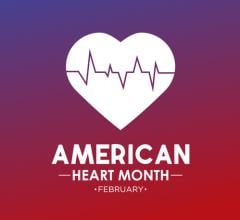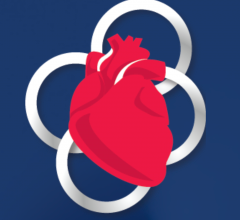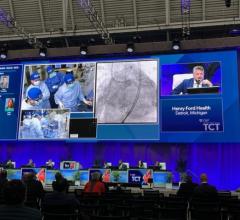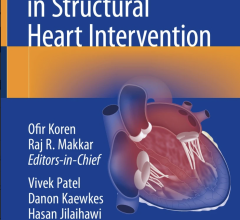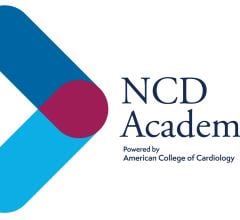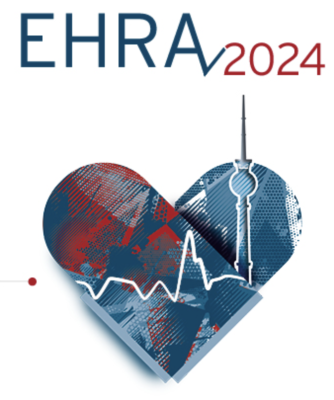
An international consensus statement on how to treat atrial fibrillation with catheter or surgical ablation has been published in EP Europace, a journal of the European Society of Cardiology (ESC), and was recently presented at EHRA 2024, a scientific congress held April 7-9 in Berlin, Germany. Four heart rhythm organizations from around the globe developed the statement. Image courtesy: European Society of Cardiology.
April 10, 2024 — An international consensus statement on how to treat atrial fibrillation with catheter or surgical ablation has been published in EP Europace,1 a journal of the European Society of Cardiology (ESC), and presented at EHRA 2024, a scientific congress of the ESC2 which was held April 7-9 in Berlin, Germany.
“Ablation is the most effective way to prevent recurrences of atrial fibrillation and delay progression to more advanced forms,” said lead author Dr. Stylianos Tzeis. “Pioneering techniques have emerged since the previous consensus in 2017,3 requiring new advice on who should receive this procedure and how to perform it in the safest and most effective manner,” Tzeis added.
The newly-published document, reported ESC in a written statement, sets out best practice standards and practical advice on which patients should receive ablation, how to perform the procedure, and how to manage patients before, during and afterwards. A healthy lifestyle is advised to reduce the risk of developing atrial fibrillation and to lower the number of recurrences.
The international consensus statement was developed by the European Heart Rhythm Association (EHRA), a branch of the ESC; the Heart Rhythm Society (HRS); the Asia Pacific Heart Rhythm Society (APHRS); and the Latin American Heart Rhythm Society (LAHRS). It is also published in Heart Rhythm, the official journal of the HRS, Journal of Arrhythmia, the official journal of the APHRS, and Journal of Interventional Cardiac Electrophysiology, the official journal of the LAHRS.
AFib Facts and Impacts
Atrial fibrillation is the most common cardiac arrhythmia, affecting 2% of individuals worldwide.4 The number of people with the disorder has risen three-fold over the last 50 years5 and is expected to increase further – mainly due to population aging and unhealthy lifestyles – reaching 14 million by 2060 in the European Union alone.6 It is estimated that approximately one in three White and one in five Black individuals will develop atrial fibrillation during their lifetime.7
Atrial fibrillation has a significant impact on people’s lives. Symptoms include palpitations, fatigue, shortness of breath, dizziness, and fainting. Compared to their peers without the condition, people with atrial fibrillation are twice as likely to be admitted to hospital, five times more likely to have a stroke, three times more likely to develop heart failure, and twice as likely to die prematurely.4
About Catheter Ablation
Catheter ablation of atrial fibrillation is an important treatment option for maintaining a normal heart rhythm and reducing arrhythmia-related symptoms.4 Ablation is a procedure which uses burning, freezing, or high energy electrical pulses (called electroporation) to inactivate the electrical triggers causing abnormal rhythms. It is typically a one- to two-hour, minimally invasive procedure in which a catheter is inserted into a blood vessel in the groin and advanced into the heart, with patients going home the same or next day.
Catheter ablation is beneficial as first-line treatment in patients with symptoms and recurrent atrial fibrillation. It is also beneficial in symptomatic patients with recurrent paroxysmal or persistent atrial fibrillation who are resistant or intolerant to at least one antiarrhythmic drug. Patients with atrial fibrillation and heart failure, a condition in which the heart muscle cannot pump enough blood to meet the body's needs, benefit from ablation to alleviate symptoms, increase the heart’s strength, and improve their prognosis.
Before the procedure, patients should have an electrocardiogram (ECG) and echocardiogram (ultrasound of the heart) to check the heart’s rhythm and function. Some patients need computed tomography or transoesophageal echocardiography to exclude the presence of a blood clot in the heart. Blood thinners should not be interrupted before catheter ablation and patients should receive specific instructions from their healthcare provider on continuing their medication.
After the procedure, all patients should receive anticoagulation for at least two months. Prolonged anticoagulation may be required depending on the risk of blood clots. Antiarrhythmic drugs are advised for some patients to prevent arrhythmia recurrences early after the procedure. Complications following catheter ablation are uncommon but can include stroke, pericardial tamponade (fluid accumulation around the heart), transient ischaemic attack, and vascular complications at the access site in the groin. The risk of death is extremely low (0.05-0.1%).
“Technological innovations have made catheter ablation safer and more effective than ever before,” Tzeis, who added, “For example, we now have pulsed field ablation which uses high energy electrical pulses to treat atrial fibrillation without damaging the nerves or oesophagus. We can also use intracardiac echocardiography to guide and facilitate the procedure with real-time visualisation of the cardiac structures being treated.”
The European Heart Rhythm Association (EHRA) is a branch of the European Society of Cardiology (ESC), which aims to improve patients’ quality of life and reduce sudden cardiac death by limiting the impact of heart rhythm disturbances.
More information: www.escardio.org
References and notes
1Tzeis S, Gerstenfeld EP, Kalman J, et al. European Heart Rhythm Association (EHRA)/Heart Rhythm Society (HRS)/Asia Pacific Heart Rhythm Society (APHRS)/Latin American Heart Rhythm Society (LAHRS) expert consensus statement on catheter and surgical ablation of atrial fibrillation. Europace. 2024. doi:10.1093/europace/euae043.
2The paper will be discussed during the session ‘2024 EHRA/HRS/APHRS/LAHRS Expert Consensus Statement on Catheter and Surgical Ablation of Atrial Fibrillation (AF)’ which takes place on 8 April 2024 at 10:45 CEST in Room 1.
3Calkins H, Hindricks G, Cappato R, et al. 2017 HRS/EHRA/ECAS/APHRS/SOLAECE expert consensus statement on catheter and surgical ablation of atrial fibrillation. Europace. 2018;20(1):e1-e160. doi: 10.1093/europace/eux274.
4Hindricks G, Potpara T, Nikolaos Dagres N, et al. 2020 ESC Guidelines for the diagnosis and management of atrial fibrillation developed in collaboration with the European Association of Cardio-Thoracic Surgery (EACTS). Eur Heart J. 2021;42:373–498.
5Schnabel RB, Yin X, Gona P, et al. 50 year trends in atrial fibrillation prevalence, incidence, risk factors, and mortality in the Framingham Heart Study: a cohort study. Lancet. 2015;386(9989):154-162.
6Di Carlo A, Bellino L, Consoli D, et al. Prevalence of atrial fibrillation in the Italian elderly population and projections from 2020 to 2060 for Italy and the European Union: the FAI Project. Europace. 2019;21(10):1468-1475.
7Mou L, Norby FL, Chen LY, et al. Lifetime risk of atrial fibrillation by race and socioeconomic status: ARIC Study (Atherosclerosis Risk in Communities). Circ Arrhythm Electrophysiol. 2018;11(7):e006350.
Document link: https://doi.org/10.1093/europace/euae043

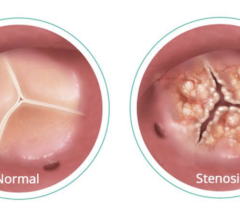
 April 25, 2024
April 25, 2024 

